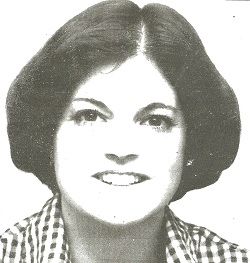A Pained Life: An Activism Primer
/By Carol Levy, Columnist
Those of us who write columns and articles, or comment and tweet about chronic pain, beat the same drum, repeatedly: The world needs to hear us. We have to make our voices heard.
Unfortunately, the most common response seems to be along the lines of “We can't.”
The reasons make sense. Pain and disability keep many of us from being able to go to a rally, representative's office or a town hall meeting. Others say “I want to make my voice heard but I don't know how.”
I'm going to take my space today to give some ideas on how.
The latest outrage is Attorney General Jeff Sessions telling the country people in pain should just “tough it out.”
Because of my eye pain, I cannot write a long letter to him. He is not someone you can access merely by going to his office. Or find him on Twitter or Facebook.
You can, however, tweet to him at the Justice Department: @TheJusticeDept or leave a comment on their Facebook page: www.facebook.com/DOJ/
I sent a tweet. I included a video about my fight and struggle to live with trigeminal neuralgia: what it is, what it has done to my life and what it has taken from me.
Do you have the ability to make a short video explaining your pain disorder and what it has done to your life?
If you have been hurt by the CDC opioid guidelines, can you tell them how? You can you tweet, for example: “CRPS has taken my life from me. Opioids have helped me to get some of it back.”
You could also tweet: “Opioids helped my chronic back pain. I was able to work, play with my kids and have a better quality of life. The CDC guidelines caused my doctor to reduce/stop them and I can no longer do those things.”
You could also find a link on the internet that describes your pain disorder and post it to Facebook: “This is what rheumatoid arthritis is. This is how the pain impacts us.”
If possible, you could also go to town hall meetings, offices or rallies where your legislators will be. I recently went to a town hall meeting on the opioid epidemic. Included on the panel were my congressional representative and one of my county commissioners. We had to submit our questions on a card rather than just ask them.
This was the second town hall meeting where my question, “How can you keep chronic pain patients safe when we are being blamed and often hurt by the actions being taken?” went unanswered.
Undeterred, I made sure to get to the congressman and the commissioner before they left the room. I made sure to come prepared with information, such as studies showing how rarely we get addicted and how the number of suicides appears to be increasing as opioid medications are being reduced or stopped.
Two years ago, I asked my congressman if he could introduce a resolution making October 7 Trigeminal Neuralgia Awareness Day. I was told the House was no longer permitting those kinds of resolutions. Instead of throwing up my hands and walking away, I asked again the following year. This time he was able to do it.
To my astonishment, when I spoke with him the second time he remembered not only that Trigeminal Neuralgia Awareness Day was in October but some of the specifics about the condition itself.
This may help him remember us -- all of us – the next time Congress debates the opioid epidemic. Chronic pain is more personal to him because of his encounter with me.
If at first you don't succeed is a cliché for a reason. It is worth writing, calling, visiting and emailing. The worst they can do is ignore you or say “No.” But trying another time may just get them to say “Yes.”
The tortoise didn’t give up when it looked like the hare was winning. We cannot afford to give up either.
Carol Jay Levy has lived with trigeminal neuralgia, a chronic facial pain disorder, for over 30 years. She is the author of “A Pained Life, A Chronic Pain Journey.”
Carol is the moderator of the Facebook support group “Women in Pain Awareness.” Her blog “The Pained Life” can be found here.
The information in this column should not be considered as professional medical advice, diagnosis or treatment. It is for informational purposes only and represent the author’s opinions alone. It does not inherently express or reflect the views, opinions and/or positions of Pain News Network.





